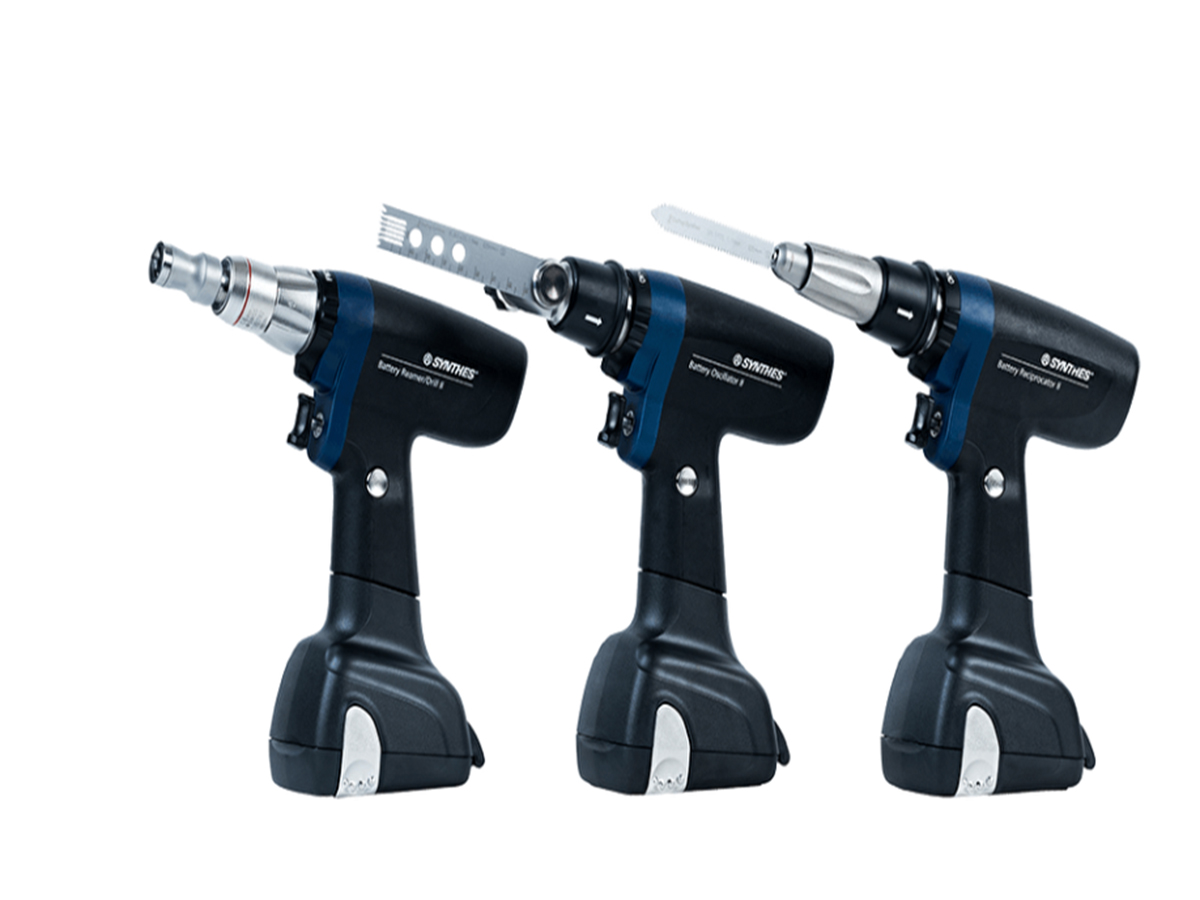Synthes Surgical Drill

The Synthes Surgical Drill is a high-performance tool commonly used in orthopedic and trauma surgeries. It is designed for precise drilling, reaming, and inserting screws or other hardware into bone. Synthes, now part of DePuy Synthes (a Johnson & Johnson company), is known for producing surgical tools and implants for various types of bone surgeries, including trauma, spine, and joint reconstruction.
Key Features:
High Torque and Speed:
- The Synthes Surgical Drill delivers powerful performance, with high torque and variable speed control, enabling the surgeon to drill through bone efficiently, even in dense cortical bone.
- The drill typically comes with adjustable speed settings to suit different types of bone and drilling requirements, providing flexibility during surgery.
Electric and Pneumatic Versions:
- Synthes offers both electric and pneumatic versions of their surgical drills. Electric models are typically powered by either a battery pack or a wall power source, while pneumatic models are powered by compressed air systems in the operating room.
- Battery-powered models offer more mobility and ease of use in settings where cords may be a hindrance, while pneumatic drills provide consistent, reliable power over long procedures.
Ergonomic Design:
- Synthes drills are designed with ergonomics in mind, providing comfortable grip and balance for the surgeon, reducing fatigue during long or complex procedures.
- The lightweight design improves control and precision, particularly for fine drilling tasks.
Quick-Change Chuck System:
- The drill features a quick-change chuck system, allowing the surgeon to quickly switch between different drill bits, taps, or reamers without losing time during the procedure.
- This feature is crucial for complex surgeries where multiple tools are needed for different stages of the operation.
Compatibility with Various Attachments:
- Synthes drills are designed to be compatible with a wide range of attachments, including drill bits, reamers, taps, and screwdrivers, making them versatile for different surgical needs.
- The attachments are designed for easy sterilization, and many are autoclavable to meet the high sterility requirements in the operating room.
Powerful Battery Technology:
- The battery-powered Synthes drills use high-capacity batteries that allow for sustained operation during long procedures without needing frequent recharging.
- Modern models often come with quick-charge capabilities, minimizing downtime between surgeries.
Enhanced Safety Features:
- The drill is designed with safety mechanisms, including overload protection, to prevent excessive heat or force during drilling, reducing the risk of damaging bone or surrounding tissues.
- The drill provides controlled power delivery, minimizing the risk of slippage or accidental injury during high-precision operations.
Durable Construction:
- The drill is built from high-quality materials designed to withstand the rigors of the operating room and repeated sterilization.
- It is engineered for reliability and longevity, making it a dependable tool for both routine and complex surgeries.
Applications:
Orthopedic Surgery:
- Widely used in fracture fixation surgeries, including the placement of plates, screws, and intramedullary nails.
- It is also used for joint reconstruction, such as hip and knee replacements, where precise drilling is essential for implant placement.
Spinal Surgery:
- In spinal procedures, Synthes drills are used for screw placement in vertebrae, often during spinal fusions or fracture repairs.
Trauma Surgery:
- The drill plays a critical role in trauma surgeries for stabilizing broken bones and fractures, enabling the surgeon to drill and insert fixation hardware quickly and accurately.
Neurosurgery:
- Although typically associated with orthopedic procedures, Synthes surgical drills can also be used in neurosurgical applications, such as craniotomies, where precision drilling is required.
Popular Models:
Synthes Power Drive:
- One of the most well-known models, offering a versatile range of applications from drilling to reaming and screw insertion. This system can handle both large and small bone surgeries.
Synthes Small Battery Drive:
- A more compact and lightweight drill, ideal for smaller bone surgeries or surgeries requiring greater precision, such as in the hand, wrist, or foot.
Synthes Electric Pen Drive:
- A compact and versatile model often used in delicate procedures, particularly in craniofacial and hand surgeries, where precision is critical.
Conclusion:
The Synthes Surgical Drill is a critical tool for orthopedic, trauma, and spinal surgeries, providing surgeons with the precision, power, and reliability they need for effective patient outcomes. Its compatibility with various attachments, ergonomic design, and safety features make it a valuable asset in the operating room.
Would you like to know more about a specific model or its usage in a particular surgical procedure?